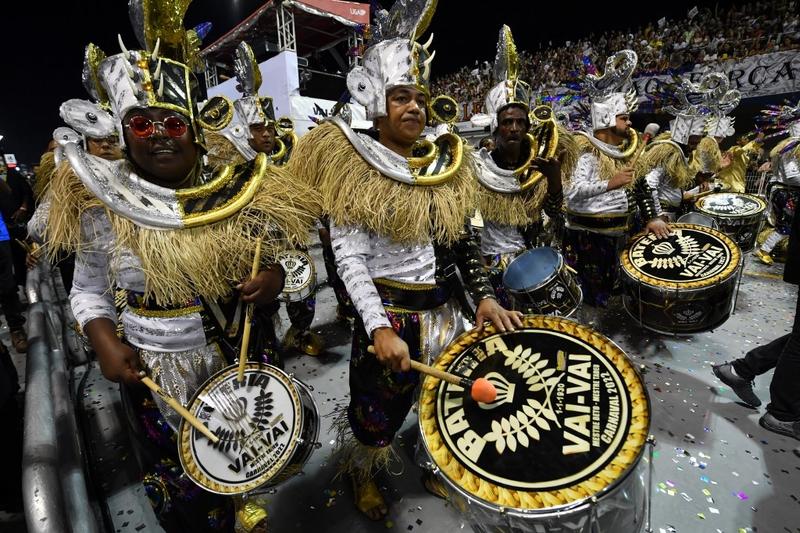 Revelers of the Vai Vai samba school perform during the second night of carnival at Sambadrome in Sao Paulo, Brazil on April 23, 2022. (NELSON ALMEIDA / AFP)
Revelers of the Vai Vai samba school perform during the second night of carnival at Sambadrome in Sao Paulo, Brazil on April 23, 2022. (NELSON ALMEIDA / AFP)
RIO DE JANEIRO - After a two-year suspension due to COVID-19, Brazil's Carnival returned this weekend, as the tourism sector was worried about a lack of income and employment.
As millions of spectators enjoyed the traditional celebration at an unusual time of the year, the famous "blocos," or musical troupes, returned to parade in the streets in cities such as Rio de Janeiro and Sao Paulo, while samba schools again lit up the Sambadrome, a special venue built for the carnival in Rio de Janeiro.
ALSO READ: Santa delivers Christmas cheer in Brazil's City of God slum
Originally scheduled for the end of February, the carnival was cancelled for the third straight year after an increase in COVID-19 cases due to the Omicron variant.
 The Unidos da Tijuca samba school float participates in the second night of the Rio Carnival parade at Sambodrome Marques de Sapucai in Rio de Janeiro, Brazil, April 23, 2022. (CARL DE SOUZA / AFP)
The Unidos da Tijuca samba school float participates in the second night of the Rio Carnival parade at Sambodrome Marques de Sapucai in Rio de Janeiro, Brazil, April 23, 2022. (CARL DE SOUZA / AFP)
However, pressure from the tourism sector over fears of another year without its main season of income and employment, led to a rescheduling for the end of April.
Although lacking in thousands of foreign tourists, the carnival was boosted by domestic revelers that pushed hotel occupancy and revived the service sector.
ALSO READ: Brazil reports nearly 30,000 new COVID-19 cases
In Rio de Janeiro, the hotel occupancy was between 85 and 90 percent this weekend, according to the Brazilian Hotel Industry Association.
 Revelers of the Vai Vai samba school perform during the second night of carnival at Sambadrome in Sao Paulo, Brazil on April 23, 2022. (NELSON ALMEIDA / AFP)
Revelers of the Vai Vai samba school perform during the second night of carnival at Sambadrome in Sao Paulo, Brazil on April 23, 2022. (NELSON ALMEIDA / AFP)
Other state capitals have also seen high rates, such as 70 percent in Recife, 65 percent in Florianopolis, 60 percent in Natal and 60 percent in Aracaju.


